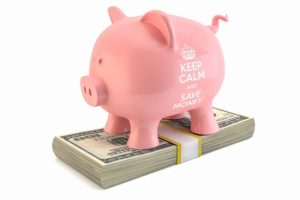
If a financial emergency were to happen today, would you be able to cover it? You get in an accident and need to pay your insurance deductible, the pipe bursts in your bathroom leaving your clothes soaked, the kid’s tuition is due, but you don’t get paid until next week – would you be financially prepared to handle it? If the answer to these questions is no, you need to consider building an emergency fund.
What is an Emergency Fund?
Simply put, an emergency or rainy-day fund is a checking or savings account where money set aside to cover financial emergencies that may arise. Though there are various opinions on how much is needed, your emergency fund should essentially be able to cover expenses in the home for several months. This way, should you lose your job or just need a large sum of cash you have it tucked away.
What if It’s Not Enough?
As some might imagine, it can take time to build a rainy-day fund totaling several months of your monthly household income. Having a backup plan that you can turn to when funds are short is always a smart move. Short-term personal cash loans or installment loans are good alternatives to payday loans. They can be applied for online and don’t require perfect credit or collateral. Approved applicants can get as much as $1250 deposited into their account and pay the balance plus interest back over the course of several months.
Why Have a Rainy-Day Fund?
Though there are solutions like short-term loans to tide you over in a quick jam, sometimes, financial emergencies are more long-term and require more money. Failing to set money aside for an emergency could result in:
· Irresponsible borrowing – applying for and receiving funds for a loan that you’re unable to repay
· Abuse of assets – When you don’t have cash to use for personal emergencies you tend to dip into other accounts and assets. Withdrawing from your retirement account, taking out a second mortgage, and even borrowing on a life insurance policy cause you to lose equity, pay more in interest, and incur fees.
· Debt – Whether you borrow money or dip into your assets when you don’t have a rainy-day fund you are accumulating a lot of debt. Credit card interest, increased mortgage payments, tax penalties, they all add up to more money that you don’t have.
· Lowered quality of life – When you don’t have money to cover emergencies, it can make them that much more stressful. Not to mention going into debt to resolve the matter creates a web of stress as you try to climb out.
Where Do You Find the Cash?
The idea of setting money aside each pay cycle might seem like an impossible task for those who are living paycheck to paycheck. Be that as it may, there are ways you can find money to add to your emergency savings fund:
· Cut back – cut back on unnecessary spending. If this means drinking one less coffee per week or only going out to eat once a month, do it and add the funds you would have used to your savings.
· $1 and $5 challenge – If you don’t think you can save in large quantities, try the $1 or $5 challenge. When paying with cash, any $1 or $5 should be added to your emergency savings.
· Do small jobs – Though you may not be interested in taking on another full-time job you can do small jobs off and online to earn extra money. Answer surveys, rake leaves, or babysit on weekends for some extra money.
Emergencies are unavoidable and could happen at any time. Though they may not be preventable, you can be proactive and have a plan. Starting a rainy-day fund and even having a backup plan like a short-term loan can make handling the matter a lot easier. You can begin building your emergency fund slowly by using the above-mentioned tips until you reach your savings goal.

